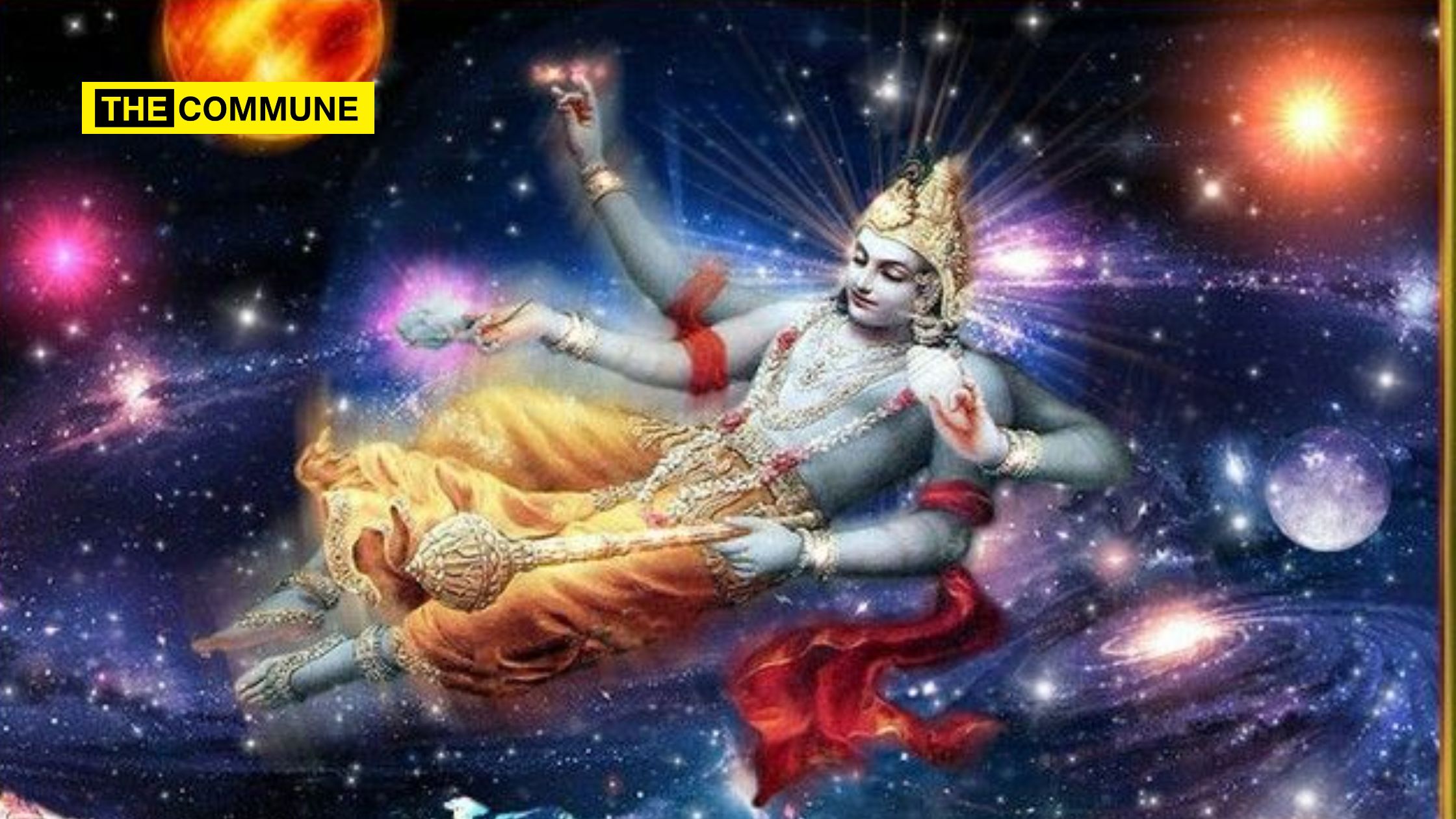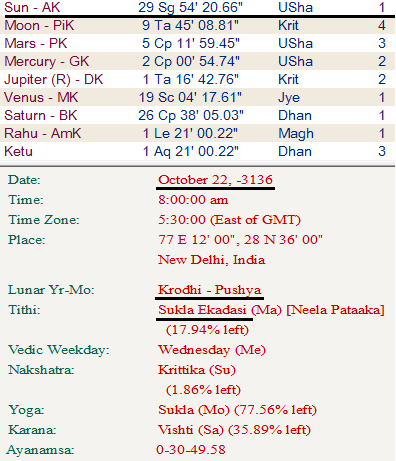
The day of Vaikuntha Ekadasi that opens the door to Vaikuntha is an important day in all the Vishnu temples of South India. Lord Vishnu mounted on his Garuda vehicle leaves the temple through Vaikuntha Dvara (the Gate to Vaikuntha) or ‘Paramapada Vaasal’ (the Gate to Paramapada) well before sunrise followed by his devotees. This is the only day this special Gate is opened in any Vishnu temple with the concept that Vishnu is taking along with him his devotees to Vaikuntha. This day falls on Shukla Ekadasi in the month of Margashira.
This also happens to be the day Krishna rendered Gitopadesa to Arjuna. The intriguing fact is that this concurrence with the date of Vaikuntha Ekadasi is lost in the memory of our people for very long. Many think that Margashira Shukla Ekadasi identified as the day Krishna preached Bhagavad Gita occurred in the lunar month of Margashira. As a result the Gita Jayanti is being celebrated in the solar month of Kartika before the occurrence of Full Moon in Kartika star. Flawed understanding of the time computation has led to this mistake.
The Cosmic Significance
Vaikunta ekadasi is the day of cosmic significance – that of the earth coming in line with the galactic centre, Sagittarius (Dhanur Rasi) and the cosmic centre. In other words, on this day, the earth will be at the outer most point from the centre of our galaxy and the nearest point to the outer space from where we, the entire systen of ours evolved and is moving outward.
Looking at the past records, this day marks turbulance, eruptions and tsunamis. This day marks the birth of the previous manvanthra, the chakshus manvanthra. This manvanthra is marked with the very important of Lord’s flight on His vahana to save the Gajendran, or rather to destroy his enemy! This day thus marks the Lord’s flight travel on Gruda vahana with all his divya aayudhas. When He does not come to destroy someone, He destroys something on the surface of this earth.
Four-Fold Calculation Of Time
Time is calculated on the basis of four factors simultaneously. The location of the sun, the moon, the star transited by the moon and all these three occurring at or after sunrise in a day determine the time running on that day. A reference such as Margashira Shukla Ekadasi means the sun is in Margashira or Sagittarius with the moon in the 11th tithi of the waxing phase at that time. The star of the day could vary in different years, and therefore it is omitted in this particular reference, but these three (solar month, lunar paksha and tithi) pertaining to solar and lunar movement are always noted as a marker to denote a specific day.
The sun being the cause of time, it cannot be left out in any reference to time. As such Margashira Shukla Ekadasi as the day of Gitopadesa can be observed only when the sun is in Margashira and not in Kartika (Scorpio). This combination further denotes that the lunar month is Pushya. This leads to the revelation that the Mahabharata war had taken place in lunar Pushya month.
The month-wise analysis of the Mahabharata events done by me based on the internal evidences shows the date of Gitopadesa with the sun still confined within the sign of Margashira. (The ayanamsa is not exact but close to it by a degree or two further inside Sagittarius.)

Krishna’s advice to Arjuna being two-fold, one, showing the way to Moksha (liberation) and the other, projecting Himself as the protector of the good and the annihilator of the evil, these two are remembered on the day of Margashira Shukla Ekadasi as Mokshada Ekadasi or Vaikuntha Ekadasi by the followers of Vishnu.
Mahabharata has never been treated as a historical document, but as Veda accessible to all and understandable by everyone. The core teaching lies in Bhagavad Gita. More than the Mahabharata connection, the importance of the teaching of Krishna to attain Vaikuntha has taken precedence and a mock rehearsal is enacted on the same day in the solar month of Margashira. In the absence of knowledge of even the existence of the observance on this day in other parts of India, it is no wonder Gita Jayanti has lost touch with the time when it ought to be observed.
The second feature is the ingeniously designed idea of Garuda Seva – of Vishnu flying in his Garuda Vahana on this day. Krishna had given the word to protect the Dharmic people from the adharmic ones. Whenever He comes out mounted on Garuda, it means He is out to destroy the Evil. This “ugra roopam” of the Lord with ‘panchayudhas’ – the five weapons is in tune with his promise of protecting the righteous from the evil that Krishna had given on Margashira Shukla Ekadasi.
The two core concepts of Gitopadesa enshrined in the observance of Vaikuntha Ekadasi can have no other rationale than remembering the day Krishna gave Gitopadesa to mankind through Arjuna.
Vaikuntha Ekadasi observance must put at rest any doubts on the solar month of Gitopadesa.
This article was originally published in the author’s blog and has been republished here with permission.
Click here to subscribe to The Commune on Telegram and get the best stories of the day delivered to you personally.




